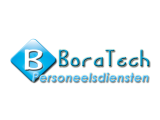When it comes to job hunting, your CV is paramount. Get it right, and you’ll have an interview in no time, but get it wrong, and you may face rejection after rejection. Every CV is different as you want to show why your set of skills makes you suitable for the position you’re applying for at that moment, but all follow a similar structure.
This guide will show you how to write a great CV that’s ready for 2018 and beyond.
.
What is a CV?
Your CV, short for curriculum vitae, is a personal marketing document used to sell yourself to prospective employers. It should tell them about you, your professional history and your skills, abilities and achievements. Ultimately, it should highlight why you’re the best person for the job.
A CV is required when applying for a job. In addition to your CV, employers may also require a cover letter and a completed application form.
What to include in your CV in 2018
While the structure of a CV is flexible, bending to your unique skill set and experiences, there are particular sections that employers expect to see on your CV regardless.
Here are the sections you must include in your CV:
Name, professional title and contact details
The first part of your CV, positioned at the top of the page, should contain your name, professional title and contact details. Under no circumstances should you title your CV with ‘curriculum vitae’ or ‘CV’ as it’s a waste of valuable space. Treat your name as the title instead.
When it comes to your contact details, your email address and phone number(s) are essential. Once upon a time, it was customary to include your full address on your CV. Today, you simply need to list your town and county.
If you like, you can also include a link to your LinkedIn profile in this section – but only if it’s up to date!
Personal profile
A personal profile, also known as a personal statement, career objective and professional profile, is one of the most important aspects of your CV. It’s a short paragraph that sits just underneath your name and contact details giving prospective employers an overview of who you are and what you’re all about.
You should tailor your profile to every job you apply for, highlighting specific qualities that match you to the role. Aim to keep your personal statement short and sweet, and no longer than a few sentences. To make the most of this section, you should try to address the following:
- Who are you?
- What can you offer the company?
- What are your career goals?
Experience and employment history
Your employment history section gives you a chance to outline your previous jobs, internships and work experience.
List your experience in reverse chronological order as your recent role is the most relevant to the employer.
When listing each position of employment, state your job title, the employer, the dates you worked and a line that summarises the role. Then bullet point your key responsibilities, skills and achievements, and bolster each point with powerful verbs and figures to support each claim and showcase your impact.
It helps to choose the duties most relevant to the job you’re applying for, especially if it’s a long list. If you have many years’ worth of experience, you can reduce the detail of old or irrelevant roles. If you have positions from more than 10 years’ ago, you can delete them.
Education and qualifications
Like your experience section, your education should be listed in reverse chronological order. Include the name of the institutions and the dates you were there, followed by the qualifications and grades you achieved.
If you have recently left education, you may write your degree, A-levels or GCSEs (or equivalents) like so:
Institution name – Dates attended (from – to)
Qualification/subject – Grade
If you have a degree, you could list a few of the most relevant modules, assignments or projects underneath.
For professionals that are a little further along in their careers, or have many certificates in their repertoire, you can lay also your qualifications.
Additional sections
There is a range of additional sections that may strengthen your CV and highlight your skills. Here are just a few you can include if you have room:
Key skills: If you’re writing a functional CV, or have some abilities you want to show off to the employer immediately, insert a key skills section underneath your personal profile. You should aim to detail four to five abilities at most.
Hobbies and interests: If you feel that your CV is lacking, you can boost your document by inserting a hobbies and interests section at the end. Be careful though; avoid listing hobbies that don’t add value to your CV or are run-of-the-mill, like reading. Draw on interests that make you stand out or are relevant to the job.
References: Like including an address on your CV, adding your referees to the end of your CV is no longer standardised. You can include a line that reads ‘references available on request’, but if you don’t have room, it’s acceptable to remove it altogether.


Suspendisse est nibh, rhoncus vel tincidunt blandit, varius non odio. Proin turpis est, elementum nec tortor id, ullamcorper ultricies lorem.
Suspendisse est nibh, rhoncus vel tincidunt blandit, varius non odio. Proin turpis est, elementum nec tortor id, ullamcorper ultricies lorem..